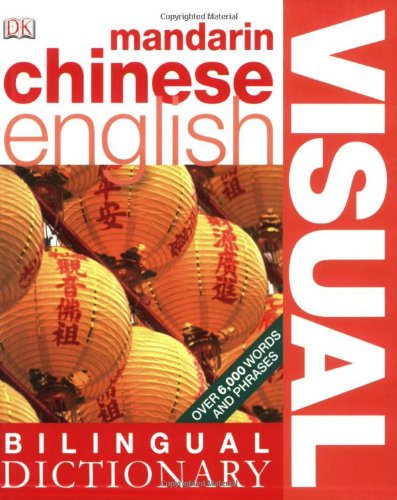DigMandarin’s Book Of The Month July 2014 – The Best Chinese Dictionary I’ve ever had
Here is July’s edition of DigMandarin’s book of the month with the Doring Kinderley’s Chinese English Visual Dictionary:

Thumbs Up:
– Extensive entries on diverse subjects. From mathematical terms all the way to grocery store items.
– Lightweight and compact.
-Well Illustrated and Organized, a common characteristic of Dorling Kindersley.
-Practical and vivid content.
Thumbs Down:
– Due to extensive content and small size font, the characters inside the book are quite small and difficult to read. This also makes memorizing its components a challenge.
Review:
This is probably the learning tool I most recommend to other Mandarin learners, and the one I use most myself. Whether you are travelling in China or simply trying to memorize a vocabulary list for a test, this book has got you covered. Its extensive and well-organized entries combined with its compact and lightweight size permits you to take it anywhere with you.
In fact, one of the sections that most fascinated me was the Home section. It had pages and pages dedicated to words related to household appliances, food, and even culinary verbs (which can be quite an aid when reading a cookbook in Chinese or a restaurant menu).

Although I have never been to China (yet!), this book taught me how to navigate life in China. While it did not contain cultural and historical tips, it taught me the Chinese I might need in daily life. Two examples are the chapters about going to the drugstore and buying groceries. I already look forward to using this book when I finally travel to China.
Indications of Use
Those studying abroad/living in China- take it with you in your purse. It is much more practical and easy to access than a regular dictionary, so you won’t spend much time looking for a word. It can also assist in communicating with other native Mandarin speakers when they don’t understand your pronunciation of a word, by pointing out to them an entry of the book.
For the organized student-Make flashcards for yourself with English and Pinyin on one side and the Chinese on the other.You can even organize the flashcards into categories like the ones in the book (Home, Countries, Plants & Animals.It’s up to you!) For more tips on how to make these flashcards, you can access our article on how to make them here.
For the indenpendent student – try reading each section one by one and notice the similarities between some of the words in the book, since many words in one section belong to the same family and contain a radical character in common.
For those with a visual memory-try drawing over of the illustrations in the book and then shut the book and try to write the Chinese subtitle accompanying the picture and then try to see if you got it correctly. This manner, the meaning of the word will be remembered since the characters will be associated with the memory of the illustrations in the book.”
For those already more confident with their learned vocabulary- You can go to the Chinese charater entry index and try to guess what is the pronunciation and meaning of that character, and then go to its respective page to see if you got it right






Many thanks for the recommendation!
I just browsed this book on Amazon and I think for me it would be very helpful.
Your suggestion to show the photo to a Mandarin speaker when your pronounciation is not so perfect is a very good idea 🙂
Hi Stephen! Thanks!I came up with it from my experience of interacting with expats here in Brazil, trying to learn to speak Portuguese.